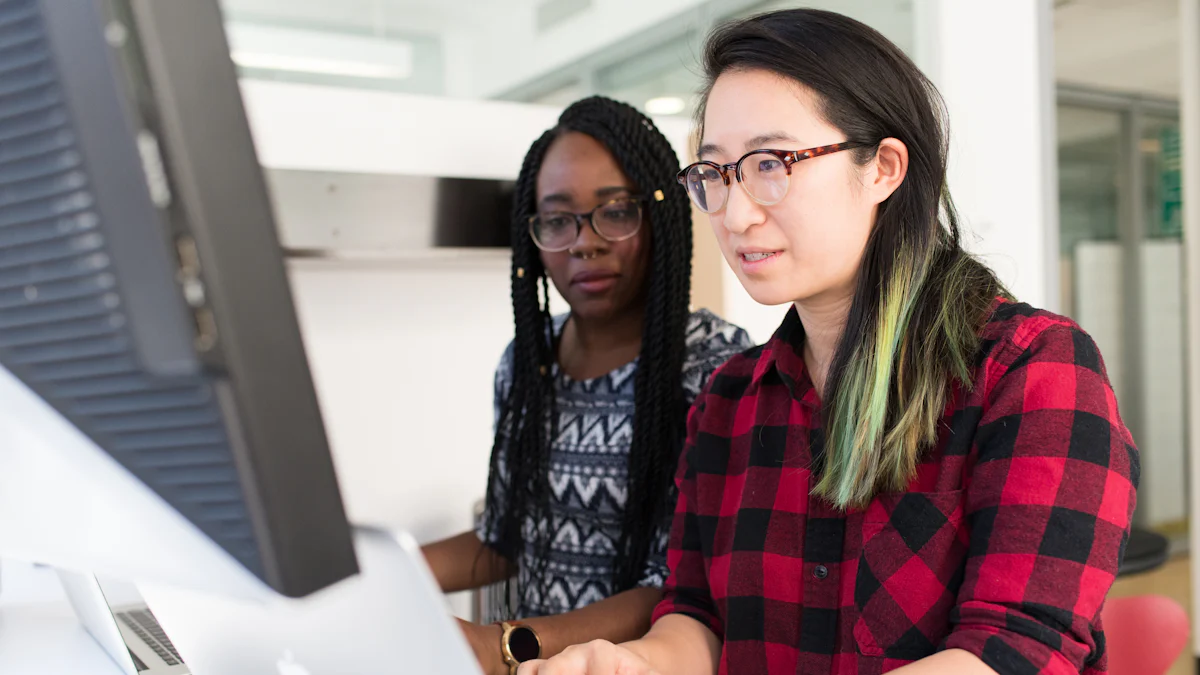How to Prepare for the Microsoft Neurodiversity Interview Process
Try Aihirely for
Smarter Interview Prep
Experience real-time AI support tailored to your Resume.
Boost your confidence and ace every question with
AI Mock Interview.

Image Source: unsplash
The Microsoft Neurodiversity Hiring Program interview process focuses on helping you shine by showcasing your unique strengths. Many traditional interviews fail to evaluate neurodiverse candidates fairly, often causing stress. This program changes that by offering quiet environments, clear formats, and trained interviewers. Participants even enjoy a 48% higher retention rate compared to others.
Key Takeaways
-
Learn about the Microsoft Neurodiversity Hiring Program. Know its goals to match your answers in the interview.
-
Use the STAR method to practice questions. This helps you share clear examples of your skills.
-
Ask for needed accommodations early. This makes the interview space fit your needs.
Overview of the Microsoft Neurodiversity Hiring Program

Image Source: unsplash
Purpose of the program
The Microsoft Neurodiversity Hiring Program exists to create opportunities for individuals on the autism spectrum. Its goal is to attract talented candidates like you while fostering an inclusive environment where you can thrive. By focusing on your strengths, the program helps Microsoft build better products and services. It’s not just about hiring; it’s about creating a workplace where neurodiverse individuals feel valued and supported.
Key differences from traditional hiring processes
This program takes a fresh approach to hiring. Instead of relying on conventional methods, it uses an extended, skills-based interview process. This structure gives you more time to showcase your abilities in a supportive setting.
Here’s how it stands out:
-
Structured interview days designed specifically for neurodiverse candidates.
These changes make the microsoft neurodiversity hiring program interview process more accessible and less stressful. You’ll find the environment tailored to your needs, helping you focus on what you do best.
Importance of neurodiversity in the workplace
Neurodiversity brings innovation and productivity to the workplace. For example, a technology firm saw a 50% boost in productivity after including neurodiverse team members. At Microsoft, neurodiverse teams have a 20% lower turnover rate and a 48% higher retention rate compared to others. These numbers show how valuable your unique perspective can be.
When companies embrace neurodiversity, everyone benefits. Teams work faster, employee satisfaction improves, and businesses thrive. Your skills and experiences can make a real difference.
Pre-Interview Preparation
Research the program and its goals
Start by understanding the Microsoft Neurodiversity Hiring Program. This program focuses on hiring individuals with autism for full-time roles and creating an inclusive workplace. It includes a hands-on academy where you can showcase your skills through team projects and assessments. This is your chance to connect with hiring managers and demonstrate your strengths.
To learn more, explore Microsoft’s official website or search for articles about the program. Look for details about its goals, such as fostering innovation and supporting neurodiverse employees. Knowing this will help you align your answers with the program’s mission during the interview.
Review the job description and company background
Take time to study the job description. Highlight the key responsibilities and required skills. Then, match these with your own abilities. For example, if the role involves data analysis or coding, think about how your strengths fit these tasks.
Also, research Microsoft’s values and recent projects. Understanding the company’s culture and goals will help you explain why you’re a great fit for the team.
Request necessary accommodations in advance
Don’t hesitate to ask for accommodations that will help you perform your best. Common requests include fewer interviewers, detailed instructions, or receiving questions in advance. You can also ask for a quiet space free of sensory distractions or bring a support person.
Microsoft encourages candidates to share their needs early. This ensures the interview environment is tailored to you, making the microsoft neurodiversity hiring program interview process more comfortable.
Practice answering common interview questions
Prepare for questions like, “What are your strengths?” or “Why are you interested in this role?” Practice your answers out loud or with a friend. This will help you feel more confident.
If possible, ask for the interview questions ahead of time. This gives you a chance to organize your thoughts and avoid surprises.
Prepare examples of your strengths using the STAR method
The STAR method (Situation, Task, Action, Result) is a great way to structure your answers. Think of specific examples where you solved a problem or contributed to a team. For instance, describe a time when your attention to detail improved a project’s outcome.
Using this method helps you give clear, focused answers that highlight your abilities.
Visit the interview location or test the virtual setup
If your interview is in person, visit the location beforehand. Familiarizing yourself with the space can reduce anxiety. For virtual interviews, test your internet connection, camera, and microphone. Make sure your setup is free of distractions.
Feeling prepared with your environment will help you focus on showcasing your skills.
Strategies During the Interview

Image Source: unsplash
Highlight your unique strengths as a neurodiverse candidate
Your neurodiversity is a strength, so let it shine during the interview. Highlight the qualities that make you stand out. For example:
-
Share how your unique problem-solving skills help you approach challenges differently.
-
Talk about your exceptional listening skills or creativity.
-
Mention your ability to focus on fairness or make connections others might miss.
These traits can set you apart and show how you’ll bring value to the team.
Use clear and structured communication
Clear communication helps you express your ideas effectively. Before answering a question, take a moment to organize your thoughts. Stick to a simple structure like:
-
State your main point.
-
Provide an example or explanation.
-
Conclude with how it relates to the role.
This approach keeps your answers focused and easy to follow.
Manage nerves with grounding techniques
Feeling nervous? That’s normal. Try grounding techniques like deep breathing or focusing on an object in the room. These methods can help calm your mind and keep you present.
Frame neurodiversity as an asset to the team
Many companies, including Microsoft, value neurodiversity as a competitive advantage. When discussing your strengths, connect them to the company’s goals. For example, explain how your attention to detail aligns with their commitment to quality. This shows how your perspective fits into their mission.
Ask thoughtful questions about the role and company
Asking questions shows you’re engaged and interested. Consider asking:
-
What are the team’s goals for the next year?
-
What does a typical day in this role look like?
-
How does the company support career growth?
These questions demonstrate your curiosity and enthusiasm for the position.
Ensure the interview setting is free of sensory distractions
If you’re sensitive to distractions, take steps to create a comfortable environment. Choose a quiet space with minimal clutter and natural light. If you’re interviewing virtually, let the interviewer know your preferences in advance. Small adjustments can make a big difference in helping you focus.
Post-Interview Steps
Send a thank-you note to the interviewers
After your interview, take a moment to send a thank-you note. It’s a simple yet powerful way to leave a positive impression. Here’s how you can craft a thoughtful message:
-
Start by expressing your gratitude for the opportunity to interview.
-
Mention specific details from your conversation to personalize the note. For example, reference a topic you discussed or a question they asked.
-
Reinforce your enthusiasm for the role and how you see yourself contributing to the team.
-
Keep the tone conversational and genuine. Avoid sounding overly formal.
A well-written thank-you note not only shows your appreciation but also helps you build rapport with the interviewers.
Reflect on your performance and identify areas for improvement
Once the interview is over, take some time to reflect. Start by jotting down your initial thoughts while the experience is still fresh. Ask yourself:
-
Did I prepare well enough for the questions?
-
Were my answers clear and structured?
-
How did I handle unexpected questions or challenges?
Break down your responses to specific questions and think about what went well and what could be improved. Pay attention to your body language and tone during the interview. If you received any feedback, use it to identify areas for growth.
You can also practice with mock interviews to refine your skills. This process helps you learn from the experience and feel more confident for future opportunities.
Stay patient and positive while waiting for feedback
Waiting for feedback can feel nerve-wracking, but staying positive is key. Remember, the hiring process takes time. Use this period to focus on other productive activities. Consider learning a new skill, networking, or preparing for other opportunities.
If you haven’t heard back after the expected timeline, it’s okay to send a polite follow-up email. Keep it short and professional, asking for an update on your application status.
Patience and a positive mindset will help you navigate this waiting period with ease.
Preparing for the Microsoft Neurodiversity Hiring Program interview process gives you a chance to showcase your unique talents. Since its start in 2015, this program has helped candidates secure roles in software engineering, data science, and more. With job coaching and mentoring, new hires transition smoothly into their positions.
Neurodiversity brings real value to teams. For instance, SAP’s Autism at Work program helped teams identify software bugs 50% faster. Similarly, neurodiverse employees at Microsoft have a 30% higher retention rate, proving the long-term benefits of inclusive hiring. Your unique perspective can drive innovation and success.
By researching, practicing, and staying confident, you can navigate the process successfully. Remember, your neurodiversity is a strength that makes you an asset to any team.
FAQ
What types of roles are available through the Microsoft Neurodiversity Hiring Program?
You can apply for roles in software engineering, data science, program management, and more. The program focuses on matching your skills with the right opportunities.
How long does the interview process take?
The process typically lasts several weeks. It includes skills assessments, team projects, and interviews designed to help you showcase your strengths.
Can I request accommodations during the interview?
Absolutely! Microsoft encourages you to share your needs early. You can request accommodations like fewer interviewers, detailed instructions, or a quiet environment.
💡 Tip: Don’t hesitate to ask for accommodations. They’re there to help you succeed!
